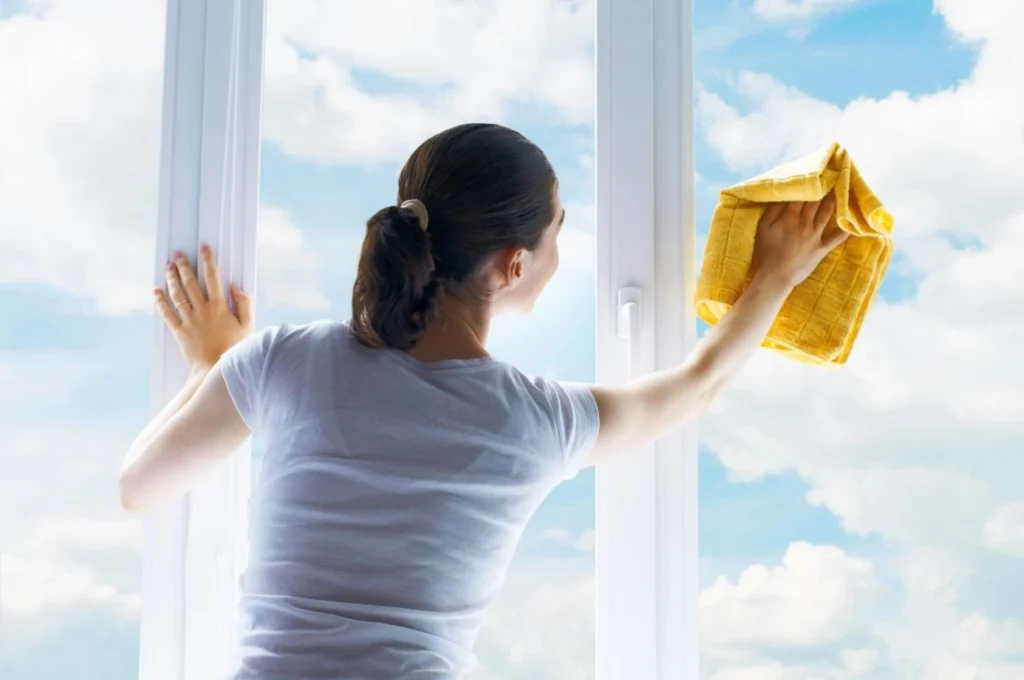The Importance of Storefront Window Cleaning in Las Vegas
In the world of business, first impressions matter more than ever — and nowhere is that more true than in the sun-soaked city of Las Vegas. With thousands of locals and tourists passing by each day, the way your storefront looks can make or break a potential customer’s decision to walk through your doors. One of the simplest yet most overlooked ways to enhance your curb appeal is through professional window cleaning.
At G&S Window Cleaning, we specialize in helping Las Vegas businesses shine — literally. Our storefront window cleaning services ensure your windows are spotless, streak-free, and crystal clear, creating a welcoming and professional image for your business.
Why Clean Windows Matter for Your Storefront
Your windows are the face of your business. They’re the first thing customers see before they ever step inside. Dirty, dusty, or streaked glass can send the wrong message, making your business appear neglected or unprofessional. In contrast, clean windows reflect care, attention to detail, and pride in your brand.
Here are a few reasons why storefront window cleaning should be part of your regular business maintenance plan:
- Attract More Customers
Clean, sparkling windows allow your products and displays to stand out. In a competitive market like Las Vegas, where every business is vying for attention, visual appeal is everything. - Protect Your Investment
Dust, grime, and hard water stains can cause long-term damage to your glass if left untreated. Regular cleaning prevents etching and extends the life of your windows — saving you money on costly replacements. - Boost Employee Morale
Clean windows don’t just benefit your customers. They also improve natural lighting, creating a brighter and more positive environment for your employees. - Reflect a Professional Image
Whether you run a retail shop, restaurant, or office building, clean windows show customers that you take pride in every aspect of your business.
The Las Vegas Environment: A Unique Challenge
Las Vegas is known for its sunshine, wind, and desert dust — all of which can quickly dull your storefront’s shine. The combination of dry air, dust storms, and hard water makes it essential for businesses to invest in regular window cleaning.
Our team at G&S Window Cleaning uses specialized tools and eco-friendly solutions designed to tackle Las Vegas’ unique challenges. From removing mineral buildup to eliminating tough streaks, we ensure your windows stay cleaner, longer — even in the desert heat.
Why Choose G&S Window Cleaning
Not all window cleaning companies are created equal. At G&S Window Cleaning, we pride ourselves on delivering top-quality service with a personal touch. Here’s what sets us apart:
- Local Expertise: We’re based right here in Las Vegas, so we understand the local environment and how to keep your windows spotless year-round.
- Professional Equipment: Our crew uses commercial-grade squeegees, pure water systems, and safe cleaning solutions to get the job done right.
- Flexible Scheduling: We work around your business hours to minimize disruptions — early mornings, evenings, and weekends are all available.
- Safety First: Every technician is trained and insured to handle jobs of all sizes, from small storefronts to multi-story buildings.
- Guaranteed Satisfaction: If you’re not 100% happy with the results, we’ll make it right — every time.
For more information or to schedule a free quote, visit us at www.gandswindowcleaning.com or call 702-889-9779 today.
Our Storefront Window Cleaning Process
- Inspection: We start by assessing your storefront to determine the best cleaning approach.
- Preparation: We remove any debris, cobwebs, or buildup around your window frames and signage.
- Cleaning: Using purified water and streak-free cleaning solutions, we thoroughly clean each pane, inside and out.
- Final Touches: We dry and polish the glass to perfection, leaving your storefront gleaming.
Whether you manage a boutique on the Strip, a restaurant in Summerlin, or a retail space in Henderson, we tailor our services to fit your needs and budget.
How Often Should Storefront Windows Be Cleaned?
In Las Vegas, most storefronts benefit from bi-weekly or monthly cleanings. The dusty desert environment means dirt accumulates faster than in most cities. Consistent cleaning not only keeps your windows looking great but also protects them from long-term damage.
If your storefront is on a high-traffic street or near construction zones, you may want to schedule cleanings even more frequently.
Let Your Business Shine — Literally
Your storefront is more than just a physical space — it’s your brand’s first impression. Don’t let dirt or streaks stand in the way of your success. With G&S Window Cleaning, you can count on fast, professional, and affordable service that helps your business look its best every day.
📞 Call or text G&S Window Cleaning at 702-889-9779
🌐 Visit www.gandswindowcleaning.com to request a free quote today!





